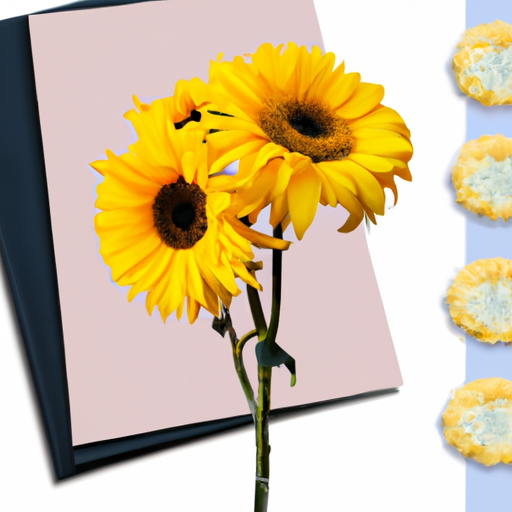Understanding White Sweat: What Is It?
White Sweat Is A Term That Has Sparked Curiosity Among Many.
Most People Are Familiar With Clear Or Yellowish Sweat, But The Idea Of White Sweat Can Be Quite Baffling.
Sweating Is A Natural Process That Helps Regulate Body Temperature And Eliminate Toxins.
But What Happens When Your Sweat Turns White?
In This Article, We Will Explore The Phenomenon Of White Sweat, Its Causes, Symptoms, And Possible Treatments.
The Science Behind Sweating
Before Diving Into The Nuances Of White Sweat, It’s Crucial To Understand How Sweating Works In General.
Sweat Glands Are Distributed Throughout Your Skin And Come In Two Types: Eccrine And Apocrine.
Eccrine Glands Are Found All Over Your Body And Produce A Watery Secretion Primarily Composed Of Water And Salt.
On The Other Hand, Apocrine Glands Are Concentrated In Areas Like The Underarms And Groin And Produce A Thicker Secretion Containing Proteins And Lipids.
When You Exercise Or Feel Hot, Eccrine Glands Kick Into Gear To Help Cool You Down.
Apocrine Glands Become Active During Stress Or Emotional Situations.
So Where Does White Sweat Fit Into This Picture?
Possible Causes Of White Sweat
White Sweat Is Not A Common Occurrence But Can Be Linked To Several Factors:
1. Skin Conditions: Certain Skin Conditions Like Vitiligo Or Eczema Can Affect The Appearance Of Your Sweat.
2. Medications: Some Medications May Alter The Composition Of Your Sweat.
3. Hyperhidrosis: People With Hyperhidrosis Often Experience Excessive Sweating Which Could Sometimes Appear Milky Due To Skin Creams Or Powders Mixing With Clear Sweat.
4. Dehydration: Lack Of Sufficient Water Intake May Concentrate Minerals In Your Sweat, Leading To An Off-White Appearance.
5. Dietary Factors: High Consumption Of Dairy Products Could Potentially Affect The Coloration Of Your Perspiration.
Symptoms To Watch Out For
If You Notice That You’re Producing White Sweat, It’s Essential To Observe Any Accompanying Symptoms:
– Excessive Sweating (Hyperhidrosis): If You’re Sweating More Than Usual Alongside Observing White Discharge.
– Skin Irritation: Redness, Itching, Or Discomfort Around Areas Producing White Sweat.
– Unusual Odor: Sometimes Changes In Color Can Be Accompanied By Unpleasant Smells.
– Physical Discomfort: Any Pain Or Swelling Should Be Addressed Promptly.
These Symptoms May Offer Clues As To Whether An Underlying Condition Like Hyperhidrosis Is Present.
Real-Life Example
Imagine Sarah, Who Recently Started Noticing Milky Streaks On Her Workout Clothes After Intense Gym Sessions.
She Initially Thought It Was Residue From Her Laundry Detergent But Soon Realized It Was Her Own Perspiration.
After Consulting Her Dermatologist, Sarah Learned That Her High Dairy Diet Combined With Dehydration Was Contributing To This Unusual Phenomenon.
With Proper Hydration And Dietary Adjustments, She Managed To Return Her Sweating To Its Normal State.
Managing And Treating White Sweat
If You’re Experiencing White Sweat Regularly, There Are Several Steps You Can Take For Management:
1. Hydration: Increasing Water Intake Helps Dilute Minerals In Your System.
2. Balanced Diet: Monitoring Dairy Consumption And Ensuring A Balanced Diet Can Make A Difference.
3. Skincare Routine: Opt For Gentle Cleansers That Don’t Interfere With Skin’s Natural Balance.
4. Medical Consultation: Seek Professional Advice If You Suspect Hyperhidrosis Or Another Underlying Condition.
5. Antiperspirants: Using Clinical-Strength Antiperspirants May Help Control Excessive Sweating Specifically Underarm sweat Issues Related to Hyperhidrosis.
Treatment Options
For Those Who Have Tried Basic Management Techniques Without Success:
1. Prescription Medications: Topical Treatments Like Aluminum Chloride Hexahydrate Can Be Effective For Severe Cases.
2. Botox Injections: These Are Often Recommended For Those Struggling With Extreme Underarm sweat As Well As Other Types Related to Hyperhidrosis.
3. Surgery (Endoscopic Thoracic Sympathectomy): This Is Usually Reserved For Severe Cases of Hyperhidrosis Where Other Treatments Have Failed.
Each Treatment Option Comes With Its Own Set of Benefits and Risks Which Should Be Discussed with a Healthcare Professional.
Prevention Tips
Preventing the Occurrence of White Sweat Largely Depends on Identifying and Mitigating Its Triggers:
– Stay Hydrated Throughout the Day to Ensure Proper Mineral Balance in Your System
– Maintain a Balanced Diet and Limit Foods that Could Potentially Affect the Color of Your Perspiration
– Use Gentle Skincare Products that Don’t Disrupt the Natural pH Balance of Your Skin
– Wear Breathable Fabrics to Allow Proper Air Circulation and Minimize Excessive Sweating
By Paying Attention to These Simple Tips, You Can Keep Both Regular and Unusual Types of Perspiration in Check
Conclusion
White sweat may seem like a puzzling phenomenon at first glance but understanding its possible causes can bring clarity
Whether it’s due to skin conditions dietary factors or hyperhidrosis there are multiple ways to manage and treat this unusual form of perspiration
By Staying Hydrated Maintaining a Balanced Diet Using Appropriate Skincare Products and Seeking Medical Advice When Necessary you can effectively address white sweat issues
Remember every person’s body is different so what works for one individual may not work for another Always consult with healthcare professionals for personalized advice and treatment options

